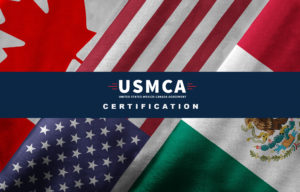News & Insights
The Game of Chicken Continues – Latest Developments in the Section 301 Tariffs & China
[September 24, 2018]
On September 24th, the third set of tariffs imposed against certain Chinese-origin goods valued at $200 billion went into effect. By way of background, the United States has imposed a series of increased tariffs under Section 301 of the Trade Act of 1974 as the result of an investigation into China’s practice of requiring U.S. companies to transfer their intellectual property rights and technologies to Chinese companies to obtain business licenses and approvals to invest in China. The USTR concluded that these practices were unreasonable, discriminatory and restrict U.S. commerce. Accordingly, the United States began imposing increased tariffs against certain Chinese-origin goods in July 2018.
Timeline of Events
The following provides a timeline of the most recent events and developments in the Section 301 saga—
- June 20, 2018: The USTR announced its plan to impose 25% tariffs on certain Chinese-origin products classified in over 800 Harmonized System tariff classifications that were valued at $34 billion (“List 1 Tariffs”). The USTR also requested public comments on the proposed imposition of tariffs on additional Chinese-origin goods valued at $16 billion (“List 2 Tariffs”). See 83 Federal Register 28710, June 20, 2018.
- July 6, 2018: The List 1 tariffs were implemented against China and, on the very same day, China retaliated by imposing its own 25% tariffs on U.S.-origin products imported into China including agricultural products, SUVs, electric vehicles, whiskey, dog food and tobacco. China also threatened to impose additional tariffs on 114 additional U.S.-origin goods if the U.S. were to take further action under Section 301.
- July 10, 2018: The USTR issued another notice of proposed tariffs against a new group of Chinese-origin goods in response to China’s July 6th retaliatory action.
- July 11, 2018: The USTR published a notice outlining the procedures and criteria for submitting requests for product exclusions from the Section 301 tariffs that took effect on July 6, 2018. See 83 Federal Register 32181 (July 11, 2018).
- August 23, 2018: The List 2 tariffs against certain Chinese-origin goods formally went into effect. On the very same day, China retaliated by imposing new tariffs on 333 tariff classification lines of U.S. goods valued at $15 billion.
- September 17, 2018: The USTR issued the final list of items that would be subject to the List 3 tariffs, and on the same day, the President issued a statement that the List 3 tariffs would take effect on September 24th. List 3 covers 5,745 tariff items; however, roughly 297 items were removed (e.g., smart watches, Bluetooth devices, certain chemicals used in manufactured goods, textiles, agricultural products, bicycle helmets, car seats and playsets). The tariff rate applied to List 3 goods is 10% until December 31st—that rate will then be increased to 25% unless China agrees to engage in meaningful negotiations with the United States. The President also stated that if China “takes retaliatory action against our farmers or other industries,” the U.S. will increase tariffs on an additional Chinese-origin goods valued at $267 billion (i.e., a possible “List 4”). The USTR also published a notice outlining the procedures and criteria for submitting requests for product exclusions from the Section 301 tariffs that took effect on August 23rd. See 83 Federal Register 47236 (September 18, 2018). See also https://ustr.gov/about-us/policy-offices/press-office/press-releases/2018/september/ustr-finalizes-tariffs-200; https://whitehouse.gov/briefings-statements/statement-from-the-president-4/.
- September 24, 2018: The List 3 tariffs under Section 301 formally took effect. In response to the List 3 tariffs, China retaliated by imposing new tariffs of either 5% or 10% on U.S.-origin goods valued at $60 billion. China’s tariffs also took effect on September 24th.
Nuances of the Section 301 Tariffs for Importers
U.S. companies trying to get their arms around all these developments should be aware of the following—
- The current and proposed Section 301 tariffs apply only to Chinese-origin goods—they do not apply to Hong Kong-origin or Taiwan-origin goods, even if they are exported from China to the United States.
- Chinese-origin goods that are shipped to the United States from countries other than China are subject to the Section 301 tariffs.
- Upon the entry of covered goods into the United States, U.S. importers must declare the HTSUS classifications that normally apply to the products, as well as the special Section 301 provision (HTSUS 9903.88).
- The additional duties imposed by headings 9903.88.01 through 9903.88.04 do not apply to goods for which entry is properly claimed under a provision of chapter 98 of the HTSUS, except for goods entered under headings 9802.00.40, 9802.00.50, 9802.00.60, and 9802.00.80. For headings 9802.00.40, 9802.00.50, and 9802.00.60, the additional duties apply to the value of repairs, alterations, or processing performed abroad, as described in the applicable heading. For heading 9802.00.80, the additional duties apply to the value of the article less the cost or value of such products of the United States, as described in heading 9802.00.80. The U.S. importer must declare HTSUS subheading 9903.88, the applicable HTSUS Chapter 98 subheading, and the Chapter 1 – 97 HTSUS classification that normally applies to the merchandise in question.
- Section 301 duties are eligible for duty drawback.
- Section 301 duties will apply to covered goods that are entered under free trade agreements or special trade programs.
- With respect to Foreign Trade Zones (FTZs), affected products that enter a FTZ (except for those eligible for admission under Domestic Status) must be entered as Privileged Foreign Status (PFS)—they will be subject to the Section 301 duties or any applicable quantitative restrictions upon their withdrawal for consumption. (Note that withdrawals for export from the United States will not be impacted by the Section 301 tariffs.)
- When importing goods put up in sets for retail sale that contain articles subject to the Section 301 tariffs, if the product that imparts the essential character to the set per General Rule of Interpretation 3(b) (i.e. the HTSUS provision under which the entire set is classified) is covered by the Section 301 tariffs, then the entire set will be subject to the additional 25% duties. If the HTSUS provision under which the entire set is classified is not covered by the Section 301 remedies, but the set contains components that are classified in a subheading covered by the Section 301 lists, the Section 301 duties will not be assessed on the individual components.
Key Strategy Considerations for U.S. Companies
To assess the impact of these developments on international supply chains, U.S. companies are urged to carefully review the lists of covered goods and consider reviewing the accuracy of the tariff classifications that are currently used for these goods—there may be valid arguments for their reclassification which could result in their removal from the scope of the Section 301 tariff increases. However, companies should tread carefully here as any sudden classification changes will likely draw the attention of U.S. Customs and Border Protection (CBP). Classification changes should be made only after a thorough legal analysis under the U.S. customs laws and regulations, the Harmonized Tariff Schedule of the United States (HTSUS) rules (e.g., General Rules of Interpretation, Section and Chapter Notes), Explanatory Notes, and relevant judicial and customs precedents to withstand CBP scrutiny. CBP may target shipments by issuing Requests for Information to the U.S. importers (CBP Forms 28) and Notices of Action (CBP Forms 29), as well as launching audits and investigations. CBP may also issue penalty notices where it believes that the Section 301 tariffs are being unlawfully circumvented.
Of course, it goes without saying that U.S. companies should, if at all feasible, explore sourcing alternatives for the products that are captured by the Section 301 actions. However, if U.S. importers suddenly begin to source covered goods from countries other than China or outsource a portion of the manufacturing and production operations to another country, those importers should also anticipate that CBP will want to verify the country of origin of the goods and confirm whether illegal transshipment may be occurring. Therefore, prior to switching the declared country of origin and marking of imported goods to non-China countries, importers should carefully apply the rules of origin as mandated by the U.S. Customs Regulations and document their legal analysis to ensure that the goods are wholly the growth, product or manufacture of the non-China country or that they undergo substantial transformation in the non-China country.
U.S. companies should also consider submitting public comments to the USTR whenever new tariffs are proposed. Concerns about the likely impact of the Section 301 actions on U.S. companies and the economy should be voiced loudly—for example, the key decision-makers should be made aware of any current and anticipated disruptions in supply chains, the impact of Section 301 actions on U.S. manufacturing operations and U.S. jobs, examples of price-gouging by some non-Chinese suppliers of covered products, and so on.
Finally, U.S. companies should also consider submitting product-specific exclusion requests to the USTR to exempt their products from the Section 301 tariffs. Note that exclusion requests must be submitted per the following deadlines:
- October 9th (For Chinese-origin products covered by the List 1 tariffs);
- December 18th (For Chinese-origin products covered by the List 2 tariffs).
Once the requests have been received, they will be made available to the public and interested parties will have an opportunity to submit responses to the requests. Approved exclusions are retroactive to the date that the tariffs were first imposed. So, for List 1 goods, approved exclusions will be valid going back to July 6th which means that duty refunds may be requested from U.S. Customs and Border Protection. In addition, approved exclusions are valid for a period of one year following the publication of the exclusion decision by the USTR. Further, Section 301 exclusions will apply to ALL importers of the subject product regardless of whether the importer was the party who requested the exclusion or not. Although the USTR has not yet formally announced the product exclusion request process for
the List 3 tariffs, we anticipate that such a process will be introduced in due order in the same way that they were rolled out for the goods in Lists 1 and 2.
This continues to be an incredibly fluid situation, and U.S. companies should continue closely monitoring the Section 301 actions that have been taken and those that are threatened. It appears that this game of chicken will continue for at least a little while longer.
If you have any questions pertaining to the Section 301 tariffs or other international trade issues, please contact us.
News & Insights

U.S. Government Agencies Warn Companies of Risks of Doing Business in Hong Kong
The Departments of Commerce, Homeland Security, State and Treasury issued a Business Advisory on July 16, 2021 warning of the risks of doing business in Hong Kong.

U.S. Export and Sanctions Update
The following provides an update on recent significant developments affecting the International Traffic in Arms Regulations (ITAR), the Export Administration Regulations (EAR) and the U.S. embargoes and sanctions programs.


